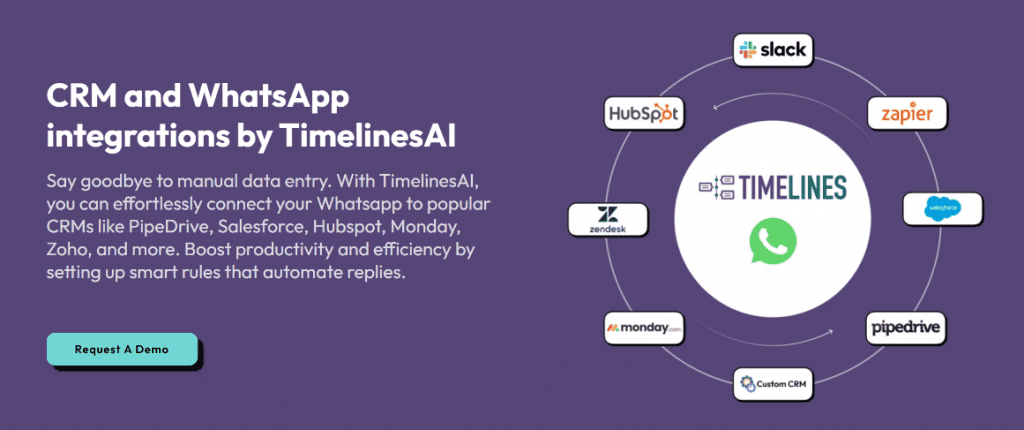In today’s highly competitive world of business, mastering the art of marketing and branding is essential for any entrepreneur or business leader looking to elevate their enterprise. Welcome to “Elevate Your Business: Mastering Marketing and Branding for Success.” This guide was created to provide you with practical, actionable insights to transform your business acumen, enhance your marketing strategies, and build a powerful brand identity. Whether you’re just starting or looking to refine your existing approach, this article is packed with valuable information to help you thrive.
Disclosure: If you click on my affiliate/advertiser’s links, I am going to receive a tiny commission. AND… Most of the time, you will receive an offer of some kind. It’ s a Win/Win!
Digital marketing strategies have revolutionised the way businesses connect with their audiences. From SEO optimisation to engaging content marketing and dynamic social media campaigns, the digital realm offers endless opportunities to grow your brand and reach your target market. In this article, we’ll go deep into these strategies, providing you with the tools and knowledge to harness the power of the digital world effectively.
Here’s a snapshot of what you are going to learn:
1. **Unveiling the Power of Digital Marketing Strategies**
– Explores the essential digital marketing tactics that can transform your business presence online. Learn how to leverage SEO, content marketing, social media, and email campaigns to drive engagement and growth.
2. **Creating a Memorable Brand Identity**
– Looks into the core elements of brand identity, from logo design and colour schemes to brand voice and messaging. Discover how to create a cohesive and compelling brand that resonates with your target audience.
3. **Effective Customer Relationship Management (CRM) Techniques**
– Understand the importance of CRM systems in maintaining strong customer relationships. Learn about the best practices for using CRM software to track customer interactions, improve service, and foster loyalty.
4. **Harnessing the Potential of Social Media Marketing**
– Uncover the strategies for effective social media marketing. From choosing the right platforms to creating engaging content, learn how to connect with your audience and build a community around your brand.
5. **Real-Life Success Stories: Lessons from Top Brands**
– Gain insights from the marketing and branding strategies of successful companies. Examine case studies of top brands to understand how they achieved their status and what lessons you can apply to your own business.
6. **Measuring Success: Key Metrics and Analytics**
– Learn how to measure the effectiveness of your marketing and branding efforts. Discover the key metrics and tools needed to analyse performance, make informed decisions, and continuously improve your strategies.
7. **Conclusion: Your Path to Business Mastery**
Building a strong brand identity is more than just creating a logo or choosing a colour scheme. It’s about developing a unique voice and message that resonates with your audience and sets you apart from the competition. A compelling brand identity not only attracts customers but also fosters loyalty and trust. I’ll guide you through the essential elements of branding, ensuring that your business stands out in a crowded market.
Customer relationship management (CRM) is at the heart of any successful business. It’s not enough to attract customers; you must also nurture and maintain those relationships to build a loyal customer base. Effective CRM techniques can significantly enhance your customer service, improve satisfaction, and ultimately drive repeat business. This post will explore the best practices in CRM, helping you create lasting connections with your clients.
To bring these concepts to life, we’ll examine real-life success stories from top brands that have mastered the art of marketing and branding. By learning from their experiences and strategies, you can gain invaluable insights and practical lessons to apply to your own business. These case studies will illustrate how effective marketing and branding can propel a business to new heights.
Finally, understanding how to measure the success of your marketing efforts is crucial for continuous improvement. We’ll discuss the key metrics and analytics tools you need to track performance, make data-driven decisions, and refine your strategies over time. With the right metrics, you can ensure that your marketing and branding efforts are not only effective but also aligned with your business goals.
By the end of this article, you’ll be equipped with a comprehensive understanding of marketing and branding, ready to implement strategies that will elevate your business and drive success. So, let’s begin this journey together and unlock the full potential of your business!
Unveiling the Power of Digital Marketing Strategies
In this digital age, the power of digital marketing strategies cannot be overstated. Embracing these strategies can significantly transform your business presence online, helping you reach a broader audience and engage with potential customers like never before. Digital marketing encompasses various tactics, including SEO, content marketing, social media, and email campaigns, each playing a crucial role in driving engagement and growth.
**Search Engine Optimisation (SEO)** is the cornerstone of any successful digital marketing strategy. By optimising your website for search engines, you improve your chances of appearing at the top of search results when potential customers look for products or services related to your business. SEO involves keyword research, on-page optimisation, and building high-quality backlinks. Effective SEO not only increases your visibility but also enhances your credibility and trustworthiness in the eyes of your audience.
**Content marketing** is another vital component. Creating valuable, relevant, and consistent content helps attract and retain a clearly defined audience. This could include blog posts, articles, videos, infographics, and more. High-quality content positions your business as an authority in your industry, fostering trust and loyalty among your customers. It’s not just about quantity but also the quality of the content you produce. By addressing the pain points and interests of your audience, you can drive more traffic to your website and convert visitors into customers.
**Social media marketing** is an incredibly powerful tool for building brand awareness and engaging with your audience. Platforms like Facebook, Instagram, LinkedIn, and Twitter provide unique opportunities to interact with customers, share your content, and promote your products or services. Effective social media marketing involves creating engaging content, responding to customer inquiries promptly, and analysing your performance to refine your strategies. By fostering a strong social media presence, you can create a community around your brand and encourage word-of-mouth marketing.
**Email marketing** remains one of the most effective ways to nurture leads and maintain relationships with your customers. By sending personalised, relevant emails, you can keep your audience informed about your latest offerings, share valuable content, and encourage repeat business. Segmentation and automation tools allow you to tailor your messages to different segments of your audience, increasing the likelihood of engagement. Email marketing helps keep your brand top of mind and drives traffic back to your website. Using email marketing programs, such as GetResponse, can help you automate these tasks.
While digital marketing offers numerous benefits, it’s essential to be aware of potential risks. These can include over-reliance on digital channels, which might lead to neglecting other important aspects of your business. Additionally, without a clear strategy, you risk spreading your efforts too thin, resulting in ineffective campaigns. It’s crucial to continually monitor your digital marketing efforts, adapt to changes, and invest in ongoing learning to stay ahead of the curve.
Finding help and inspiration is easier than ever, thanks to the wealth of resources available online. From industry blogs and online courses to webinars and digital marketing communities, there are numerous ways to enhance your knowledge and skills. Websites like Moz, GetResponse, HubSpot, and the Content Marketing Institute offer valuable insights and tools to help you master digital marketing strategies. Networking with other business professionals and attending industry events can also provide fresh perspectives and ideas.
By leveraging the power of digital marketing strategies, you can significantly boost your business’s online presence, attract more customers, and achieve sustainable growth. Embrace these tactics, stay informed about industry trends, and continuously refine your approach to become a more successful business person and leader. The digital world is full of opportunities—it’s time to seize them and elevate your business to new heights!
Creating a Memorable Brand Identity
Creating a memorable brand identity is a fundamental step towards establishing a successful business. A strong brand identity not only distinguishes your business from competitors but also creates a lasting impression on your target audience. It encompasses various elements, including logo design, colour schemes, brand voice, and messaging, all working together to form a cohesive and compelling brand that resonates with your customers.
At the heart of your brand identity is your **logo design**. Your logo is often the first thing people see and should encapsulate the essence of your business. It needs to be simple, memorable, and versatile, ensuring it looks good across different media and sizes. Consider working with a professional designer who can translate your business values and mission into a visual symbol that truly represents your brand.
**Colour schemes** play a crucial role in brand identity. Colours evoke emotions and can significantly impact how your audience perceives your brand. For example, blue often conveys trust and professionalism, while red can evoke excitement and passion. Choose a colour palette that aligns with the emotions you want to evoke in your customers and use these colours consistently across all your marketing materials to create a unified brand experience.
**Brand voice** is another essential element. It refers to the tone and style of your communication, whether it’s formal, casual, friendly, or authoritative. Your brand voice should reflect your business’s personality and be consistent across all platforms, including your website, social media, and customer interactions. A clear and consistent brand voice helps build trust and makes your brand more relatable to your audience.

**Messaging** involves the core messages you want to convey about your business. This includes your value proposition, mission statement, and key selling points. Your messaging should clearly communicate what makes your business unique and why customers should choose you over competitors. It should be concise, compelling, and consistently reinforced across all your marketing efforts.
The benefits of creating a strong brand identity are manifold. A well-defined brand can attract and retain customers, foster loyalty, and even allow you to command higher prices for your products or services. It helps customers understand what to expect from your business, builds trust, and can turn one-time buyers into repeat customers and brand advocates.
However, there are risks involved if not done correctly. An inconsistent brand identity can confuse customers and dilute your brand’s impact. It’s crucial to ensure that all elements of your brand identity are aligned and consistently applied across all channels. Regularly reviewing and updating your brand guidelines can help maintain this consistency.
Finding help and inspiration is crucial in developing a memorable brand identity. Online resources such as branding blogs, design websites, and digital marketing courses can provide valuable insights and guidance. Tools like Canva for design, or brand strategy templates from HubSpot, can help you get started. Additionally, working with branding professionals or agencies, like Fiverr, can provide expert advice and ensure your brand identity is both impactful and cohesive.
Creating a memorable brand identity is an ongoing process that requires attention, creativity, and consistency. By focusing on core elements like logo design, colour schemes, brand voice, and messaging, you can build a brand that not only stands out but also resonates deeply with your target audience. This strong foundation will support your business growth and establish you as a successful leader in your industry.
Effective Customer Relationship Management (CRM) Techniques
Effective Customer Relationship Management (CRM) techniques are indispensable for any business aiming to build and maintain strong customer relationships. CRM systems are designed to manage your company’s interactions with current and potential customers, ensuring that every touchpoint is optimised for customer satisfaction and loyalty. In this section, we’ll explore what CRM means, how to implement it effectively, the benefits it offers, potential risks, and where to find resources and inspiration to enhance your CRM strategy.
CRM systems are crucial because they centralise customer data, making it easier for businesses to track interactions, preferences, and purchase histories. This comprehensive view of the customer allows businesses to personalise their marketing efforts, provide tailored services, and anticipate customer needs. By leveraging CRM software, you can improve your customer service, streamline processes, and ultimately foster stronger, more loyal customer relationships.
Implementing a CRM system starts with selecting the right software. Look for a solution that aligns with your business needs, whether it’s Salesforce, HubSpot, or another platform. The key is to choose a system that is user-friendly, scalable, and integrates well with your existing tools. Once you have your CRM software in place, ensure that your team is adequately trained to use it effectively. This involves understanding how to input data, track customer interactions, and generate reports.
Best practices for using CRM software include regularly updating customer information to keep it accurate and relevant. It’s essential to document every interaction, whether it’s a phone call, email, or meeting, to maintain a complete customer history. This practice helps in providing consistent and personalised service, as all team members have access to the same information. Additionally, segmenting your customer base based on specific criteria such as purchase behaviour or demographics allows for more targeted marketing campaigns.
Another critical aspect of CRM is automating routine tasks to save time and reduce the risk of human error. Many CRM systems offer automation features that can handle tasks like sending follow-up emails, scheduling appointments, and tracking sales leads. Automation ensures that no customer interaction falls through the cracks, enhancing the overall efficiency of your customer relationship management efforts.
The benefits of effective CRM are numerous. Improved customer service leads to higher customer satisfaction and retention rates. Personalised interactions make customers feel valued, increasing their loyalty to your brand. Furthermore, CRM systems provide valuable insights through analytics and reporting tools, enabling you to make data-driven decisions that can boost sales and improve marketing strategies. By fostering stronger customer relationships, you can drive long-term business growth and success.
However, there are potential risks involved if CRM is not implemented correctly. Poor data management can lead to inaccuracies that harm customer relationships. Over-reliance on automation without a personal touch can make interactions feel impersonal. It’s essential to strike a balance between automation and human engagement, ensuring that your customers still feel valued and heard. Regularly reviewing and refining your CRM processes can help mitigate these risks.
For help and inspiration, numerous online resources can guide you in mastering CRM techniques. Websites like CRM Magazine, HubSpot’s blog, and Salesforce’s resource centre offer a wealth of information on best practices, case studies, and the latest trends in customer relationship management. Additionally, participating in webinars, attending industry conferences, and networking with other professionals can provide valuable insights and practical tips to enhance your CRM strategy.
In conclusion, effective CRM techniques are vital for maintaining strong customer relationships and driving business success. By selecting the right CRM software, adhering to best practices, and continually refining your approach, you can provide exceptional service, foster customer loyalty, and achieve your business goals. Embrace the power of CRM to elevate your business and become a more successful and knowledgeable leader in your industry!
Harnessing the Potential of Social Media Marketing
Harnessing the potential of social media marketing is essential for modern businesses aiming to connect with their audience and build a vibrant community around their brand. Social media platforms offer unparalleled opportunities for engagement, brand visibility, and customer interaction. In this section, we will explore what social media marketing entails, how to implement it effectively, the benefits it offers, potential risks, and where to find resources and inspiration to enhance your social media strategy.
Social media marketing involves using platforms like Facebook, Instagram, LinkedIn, Twitter, and TikTok to promote your products or services, engage with your audience, and build brand loyalty. The first step in effective social media marketing is **choosing the right platforms**. Not all social media channels are suitable for every business. Identify where your target audience spends their time and focus your efforts on those platforms. For instance, LinkedIn is excellent for B2B marketing, while Instagram and TikTok are ideal for reaching younger, visually-oriented audiences.
**Creating engaging content** is at the heart of social media marketing. Content should be relevant, valuable, and tailored to the preferences of your audience. Use a mix of content types, such as images, videos, infographics, and blog posts, to keep your audience engaged. Storytelling is particularly powerful on social media; share stories that resonate with your audience, highlight customer testimonials, and showcase behind-the-scenes glimpses of your business. Interactive content like polls, quizzes, and live videos can also boost engagement and foster a sense of community.
**Building a consistent brand voice** across all social media channels is crucial. Your brand voice should reflect your business’s personality and values, making your communication recognisable and relatable. Whether your tone is professional, friendly, or playful, ensure it remains consistent in all your posts, comments, and interactions. Consistency helps build trust and strengthens your brand identity.

Engaging with your audience is vital for social media success. Respond to comments, messages, and mentions promptly and authentically. Show appreciation for your followers’ support, address their concerns, and encourage conversations. This two-way communication not only enhances customer satisfaction but also builds a loyal community around your brand. Additionally, collaborating with influencers and encouraging user-generated content can expand your reach and credibility.
While social media marketing offers numerous benefits, it’s essential to be aware of potential risks. **Managing your online reputation** is critical, as negative comments or reviews can impact your brand image. Address any issues professionally and constructively, showing your commitment to customer satisfaction. Another risk is the constant evolution of social media algorithms and trends, which requires staying updated and adaptable. Regularly analyse your social media metrics to understand what works and adjust your strategies accordingly.
For help and inspiration, numerous resources are available online. Websites like Social Media Examiner, HubSpot, and Hootsuite’s blog offer valuable insights, tips, and case studies on social media marketing. Participating in webinars, online courses, and social media marketing forums can also provide practical advice and keep you informed about the latest trends and best practices. Networking with other social media marketers and joining professional groups on platforms like LinkedIn can offer support and fresh perspectives.
In conclusion, harnessing the potential of social media marketing can significantly elevate your business by enhancing brand visibility, engaging with customers, and building a loyal community. By choosing the right platforms, creating engaging content, maintaining a consistent brand voice, and actively engaging with your audience, you can develop a successful social media strategy. Embrace the dynamic world of social media marketing to connect with your audience and drive your business towards greater success!
Real-Life Success Stories: Lessons from Top Brands
Real-life success stories provide invaluable insights into the practical value of implementing effective marketing and branding strategies. By examining the journeys of successful companies, you can uncover the tactics that propelled them to the top and learn from their experiences. Equally important are the cautionary tales of businesses that failed to adopt these strategies and suffered the consequences. This section will highlight both types of examples to underscore the importance of mastering marketing and branding for business success.
One exemplary success story is that of **Apple Inc.** Apple’s marketing and branding strategies are renowned for their consistency, innovation, and customer-centric approach. From its iconic logo design to its sleek product packaging and minimalist advertising, Apple has created a brand identity that is instantly recognisable and deeply resonant with its audience. By focusing on user experience and building a loyal community around its products, Apple has fostered a cult-like following. The lesson here is the power of a cohesive and compelling brand identity combined with a strong focus on customer experience.
Another inspiring example is **Nike**. Nike’s “Just Do It” campaign is a testament to the effectiveness of powerful messaging and brand voice. This slogan, coupled with high-impact advertisements featuring athletes and inspirational stories, has helped Nike become a global leader in sportswear. Their use of social media to engage with customers and promote user-generated content has further strengthened their brand community. Nike’s success illustrates the importance of consistent messaging, emotional connection, and leveraging digital platforms to build and sustain a powerful brand.
On the flip side, **Kodak** serves as a cautionary tale. Once a dominant force in the photography industry, Kodak failed to adapt to the digital revolution. Despite inventing the first digital camera, Kodak’s reluctance to embrace digital technology and update its marketing strategy led to its downfall. This example highlights the risks of complacency and the necessity of staying current with market trends and technological advancements. Businesses must continually evolve their strategies to remain relevant and competitive.

Another notable failure is **Blockbuster Video**. At its peak, Blockbuster was a household name in video rentals. However, the company’s failure to adapt to the digital streaming trend, epitomised by its decision to pass on acquiring Netflix, led to its eventual demise. This underscores the importance of innovation and adaptability in marketing and branding strategies. Companies must be willing to pivot and embrace new business models to meet changing consumer demands.
Analysing these case studies helps us understand the specific strategies that successful brands have employed to achieve their status. For instance, both Apple and Nike excel in creating emotional connections with their audience through storytelling and consistent brand messaging. They also leverage digital marketing channels effectively to engage with their communities. These examples provide clear lessons on the importance of a strong brand identity, emotional resonance, and adaptability.
For businesses looking to elevate their marketing and branding efforts, these stories offer both inspiration and caution. Successful companies demonstrate the value of investing in a strong brand identity, understanding and anticipating customer needs, and continuously innovating. Conversely, the failures of Kodak and Blockbuster remind us that neglecting to adapt and evolve can have dire consequences. By learning from these examples, businesses can apply proven strategies to their own operations, fostering growth and resilience in an ever-changing marketplace.
In conclusion, real-life success stories and cautionary tales alike underscore the critical importance of effective marketing and branding strategies. By examining the journeys of top brands, we can glean valuable lessons that inform and inspire our own business practices. Embrace these insights to master marketing and branding, and propel your business towards lasting success.

Measuring Success: Key Metrics and Analytics
Understanding how to measure the effectiveness of your marketing and branding efforts is crucial for making informed decisions and continuously improving your strategies. Without proper measurement, it’s impossible to know whether your efforts are paying off or if adjustments are needed. This section will discuss the key metrics and tools needed to analyse performance, and provide practical examples to illustrate their importance.
One of the most important metrics to track is **Return on Investment (ROI)**. ROI measures the profitability of your marketing campaigns by comparing the revenue generated to the cost of the campaign. This metric helps you determine which campaigns are delivering the best results and which ones need re-evaluation. For example, if a social media advertising campaign costs £1,000 and generates £5,000 in sales, the ROI is 400%, indicating a highly effective campaign.
**Customer Acquisition Cost (CAC)** is another critical metric. CAC calculates the cost of acquiring a new customer, including all marketing and sales expenses. Lowering your CAC while maintaining or increasing your sales volume indicates more efficient marketing efforts. For instance, if your CAC is £50 and you manage to reduce it to £40 without sacrificing customer quality or volume, you’ve improved your marketing efficiency.
**Customer Lifetime Value (CLV)** measures the total revenue you can expect from a single customer over the course of their relationship with your business. By comparing CLV to CAC, you can assess the long-term value of your marketing investments. A higher CLV relative to CAC suggests that your marketing strategies are effectively fostering long-term customer relationships. For example, if your average CLV is £500 and your CAC is £50, your marketing strategy is yielding a substantial return.
**Brand awareness** can be measured through metrics such as website traffic, social media reach, and engagement rates. Tools like Google Analytics, Facebook Insights, and Twitter Analytics provide detailed reports on how many people are visiting your site, viewing your content, and engaging with your posts. For instance, a spike in website traffic following a marketing campaign can indicate increased brand awareness and interest.
**Conversion rates** are essential for understanding how well your marketing efforts are driving desired actions, such as making a purchase or signing up for a newsletter. By tracking conversion rates, you can identify which channels and campaigns are most effective at turning prospects into customers. For example, if your email marketing campaign has a conversion rate of 5%, while your social media campaign has a conversion rate of 2%, you might focus more resources on email marketing.
**Customer feedback and satisfaction surveys** provide qualitative insights into how your brand is perceived and where improvements can be made. Tools like SurveyMonkey and Google Forms allow you to gather customer opinions on your products, services, and overall brand experience. High levels of customer satisfaction typically correlate with strong brand loyalty and positive word-of-mouth marketing.
Several tools can help you track these metrics and analyse your marketing performance. **Google Analytics** is invaluable for understanding website traffic and user behaviour. **CRM software** like HubSpot or Salesforce tracks customer interactions and helps manage relationships. **Social media management tools** such as Hootsuite and Buffer provide insights into engagement and reach. Additionally, **email marketing platforms** like Mailchimp or GetResponse offer analytics on open rates, click-through rates, and conversions.
By regularly monitoring these metrics and utilising these tools, you can make data-driven decisions that enhance your marketing and branding strategies. Continuous analysis and improvement ensure that your efforts remain effective and aligned with your business goals. Learning from real-life examples of both successful and failed marketing strategies further illustrates the importance of measuring and adapting your approach.
In conclusion, measuring the effectiveness of your marketing and branding efforts is essential for sustained business success. By tracking key metrics like ROI, CAC, CLV, and conversion rates, and using tools like Google Analytics and CRM software, you can gain valuable insights into your performance. These insights enable you to make informed decisions, refine your strategies, and ultimately achieve your business objectives.

Conclusion: Your Path to Business Mastery
In today’s fast-paced business world, mastering marketing and branding is essential for any entrepreneur or business leader aspiring to elevate their business. We’ve explored a myriad of strategies and techniques to help you achieve this, from digital marketing and creating a strong brand identity to effective customer relationship management and harnessing the power of social media. Each of these elements plays a crucial role in building a successful, sustainable business.
Digital marketing strategies like SEO, content marketing, and email campaigns are powerful tools that can transform your online presence. By optimising your website for search engines, creating valuable content, and engaging with your audience through personalised email campaigns, you can drive significant growth and engagement. Remember, the digital landscape is ever-evolving, so staying updated with the latest trends and continuously refining your strategies is key to maintaining a competitive edge.
Creating a memorable brand identity sets the foundation for your business. Your logo, colour schemes, brand voice, and messaging should all work together to create a cohesive and compelling brand that resonates with your target audience. A strong brand identity not only attracts customers but also fosters loyalty and trust, setting you apart from the competition. Consistency across all platforms and interactions is vital to maintaining this trust and recognition.
Effective customer relationship management (CRM) techniques ensure that you not only attract customers but also retain them. By using CRM software to track customer interactions, personalise service, and automate routine tasks, you can build stronger relationships and improve customer satisfaction. The benefits of a well-implemented CRM system are manifold, including higher customer retention rates and valuable insights into customer behaviour, which can drive informed business decisions.
Harnessing the potential of social media marketing allows you to engage directly with your audience, build a community around your brand, and amplify your reach. By choosing the right platforms, creating engaging content, and maintaining a consistent brand voice, you can connect with your audience on a personal level. Social media also provides a platform for real-time feedback and interaction, which can be invaluable for refining your marketing strategies and improving customer satisfaction.
Learning from real-life success stories and measuring the effectiveness of your marketing efforts are crucial steps in refining your strategies. By examining the marketing and branding strategies of top brands, you can gain valuable insights and apply these lessons to your own business. Tracking key metrics such as ROI, CAC, and conversion rates with tools like Google Analytics and CRM software enables you to make data-driven decisions and continuously improve your efforts.
As you embark on this journey to elevate your business, remember that mastering marketing and branding is an ongoing process. Stay committed to learning, adapting, and evolving your strategies to meet the changing needs of your market and audience. This dedication will not only help you achieve your business goals but also establish you as a successful leader in your industry.
I invite you to continue visiting Krislai.com to deepen your knowledge and gain more insights into developing your business acumen and leadership skills. My blog is dedicated to providing you with the latest trends, practical advice, and inspiring success stories to help you succeed. Embrace the tools and strategies discussed here, and let them guide you on your path to business mastery. Start today, and watch your business soar to new heights!

Why not have a look at these posts:
- Turn AI Anxiety into Competitive Advantage: How to Future-Proof Your Workforce for the AI Revolution
- Unlock Profit: Calculate Customer Lifetime Value & Maximize Growth
- Creating a Customer Persona: A Step-by-Step Guide On How To Do It
- Unleashing the Power of Digital Signage: The Best Software to Transform Your Business
- How Businesses Can Use Freelance Platforms & Expert Networks to Scale Smarter





